Mark Bo Chu is an Australian artist based in Melbourne who is known for his dynamic and vibrant paintings that explore the connection of food, place, and memory. I was fortunate enough to attend one of his talks where he discussed his journey as an artist, including his earlier career as a writer and how he first began his career by selling art at local markets. His art is influenced by his surroundings, particularly Melbourne’s diverse food culture and his emotional connection to these places. Having his recent exhibition Eat With Our Eyes located in the Melbourne City Library gallery, adds another layer of depth to his art providing a perfect backdrop of Chu’s exploration of Melbourne's Food culture.
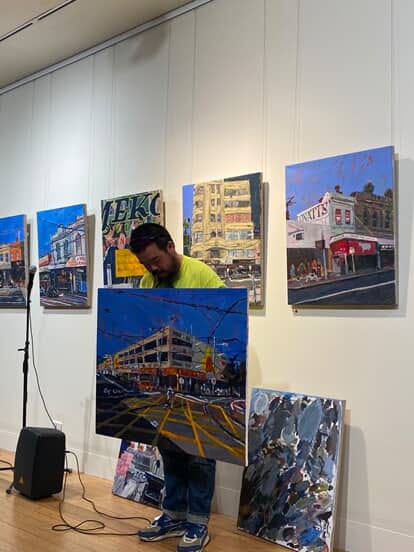

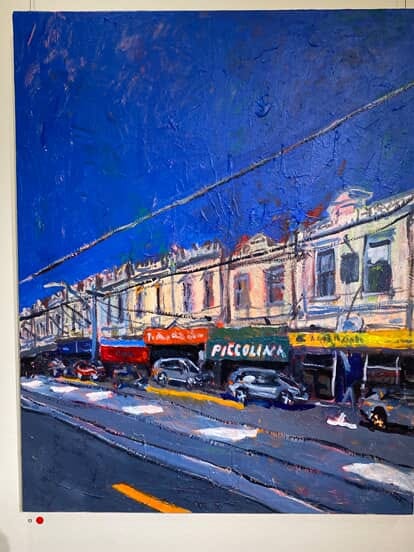
Eat With Our Eyes is more than just a collection of paintings, it's an exploration of how food, place and memory intertwine to form our daily experiences. Through 17 vivid and striking pieces, Chu captures the essence of Melbourne's food scene, focusing on iconic locations like Chapel Street, Footscray Market, Lygon Street, Carnation Canteen, China Bar on Elizabeth Street, Mekong Vietnam and France Soir. These places, familiar to so many of us, are transformed into dynamic, sensory experiences through his lens, whilst still inviting the viewer to reflect on their own personal connections to these spaces and the food and spaces that define them.
Although his painting may not show it, Mark discussed his depiction and personal experience of the North Fitzroy Piedimonte IGA, which he describes as more than just a grocery store. It’s a space where people come to be seen, with aisles that “are like catwalks.” This unique perspective highlights how even the most mundane places can become stages for self-expression and social interaction.
Mark has turned familiar streets and favourite eateries into vibrant stories of culture, memory, and identity. Each painting is a personal exploration of how food and places shape who we are and how we connect with the world around us. Chu’s work serves as a reminder of the power places hold.
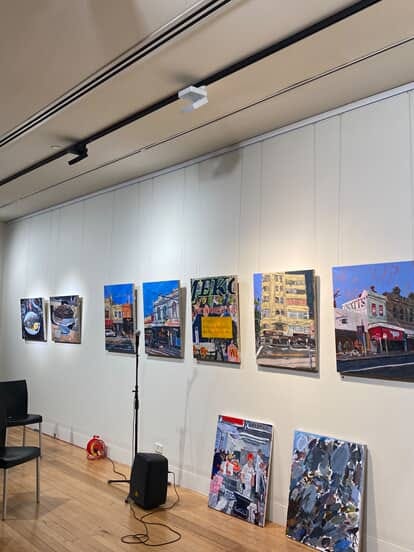
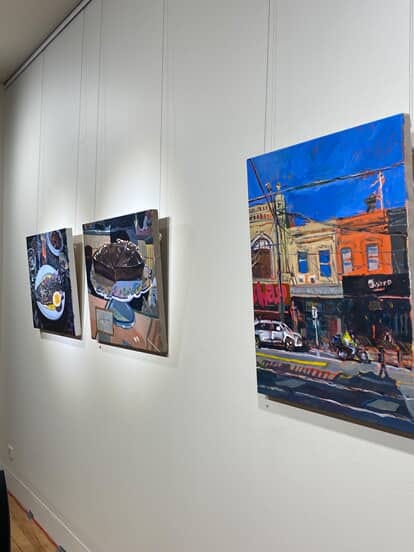
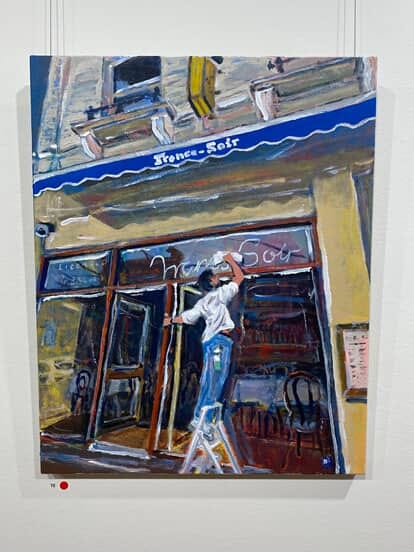
Chu talked deeply into the specific uses of bold colours, sharp shapes, and abstract forms and how important they are to convey the moods and atmospheres of these places. Through his work, viewers are offered an intimate glimpse into the emotions and history tied to these locations he paints. Allowing us to connect with them on a deeper, more personal level.
For Example, in his piece depicting Donatis titled ‘The Theatre’ – he transforms the streetscape into a stage. The saturated red, reminiscent of a theatre curtain, is not merely a colour choice but a deliberate visual metaphor. It demands attention, acting as a symbolic entry point into the scene. However, as Chu notes “it would be too obvious if the red curtain was the only highly saturated colour.” To balance this, he extends the use of intense saturation across the composition through the fluorescent pastel green building, the vivid blue sky and other surrounding elements. Creating a cohesive vibrancy that energises the piece while maintain the theatrical metaphor without letting it dominate the work.
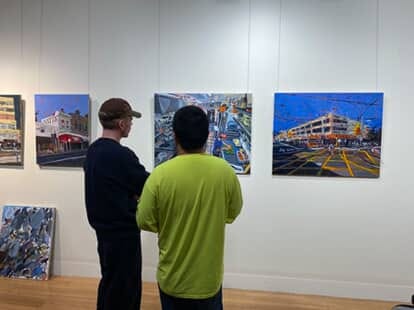

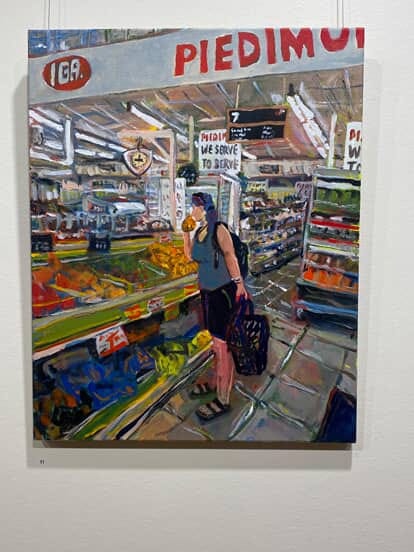
His paintings are a visual celebration of everyday experiences, focusing on Melbourne’s ever-evolving food scene, where trendy spots coexist with long standing staples.


